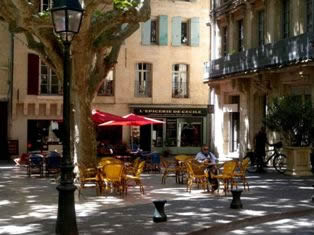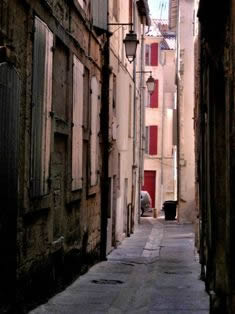Beaucaire - A Former Beauty
By
Beaucaire is a small Provencal town situated on the banks of the Rhone river. There is evidence of a Gallo-Roman settlement in this hilly area as early as 11 B.C.. The ancient community gave way to a medieval town in 1067 and the establishment of a castle in 1180. The name Beaucaire translates into beautiful stone, most likely a reference to the limestone found in the area. One Sunday, we headed out for a short afternoon of exploring and a bit of history. The town of Beaucaire is located in the "Golden Triangle" of Avignon, Arles and Nimes, all much larger cities with extensive historical monuments. The town of Beaucaire is bordered on one side by the Rhone river, and on another by the Rhone-S�te canal. Unfortunately, the town is not nearly as enthralling as the bigger centres in the region and clearly not as well-maintained.
Castle remains in Beaucaire
The remains of the castle are impressive, even as a shadow of its former size. Standing in the open area after the entrance, one can begin to imagine the immense presence that once stood on this hilly promontory. Entry to the castle is free and guided tours are available in a limited fashion. The view of the Rhone river from the top is worth the short climb. However, in our opinion we found that overall the site condition was poor, as compared to other historical monuments in the region. The town itself is not terribly large, and it is worth the time for a short stroll through the old streets. In the historical section, one begins to get a feel for what this centre may have been like during the days when the castle occupied 26 hectares and the numerous mansion houses were at their prime. The height of prominence for this centre was in the 18th century when the Madeleine's Fair, which is still held each July 21st, reached 250,000 attendees. However, over time as the importance of the fair declined, and commerce shifted to other centres, the influence of Beaucaire has declined. The town has some historical buildings that are appealing, unfortunately, though not as impressive as those found in many other larger cities.

Explore region around Beaucaire
My husband had visions of an afternoon nap at this point, but he was out of luck. Just a few kilometres away from Beaucaire is the Abbaye de Saint-Roman. This monastery dates from the 5th century. It was a hermit settlement and occupied by monks until 1538. The entire structure was literally carved out of the limestone on the hill. The structure is the only troglodyte monastery in Europe, where literally the occupants lived like cavemen in the rock.

The challenge faced by Beaucaire and other small centres, is that the entire region has a such a rich and complex history, it is difficult to attract the necessary attention and funding. The Beaucaire tourist office maintains an informative website. However, it is short-sighted that the parking in front of their office is by permit only! It is potentially unfair to deny yourself a visit to Beaucaire. Certainly, it will never have the same crowds as the larger centres like Avignon. If you do go, do not miss the Abbaye de Saint-Roman as it is truly worth a reflective visit.
Carolyne Kauser-Abbott http://www.gingerandnutmeg.com
